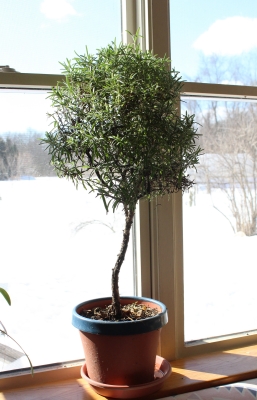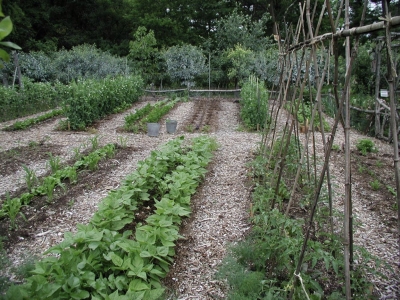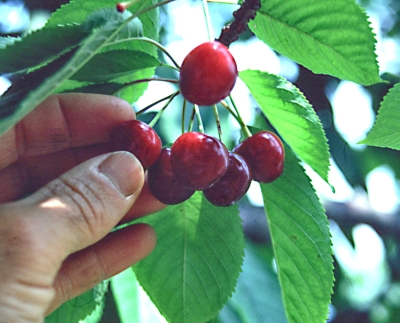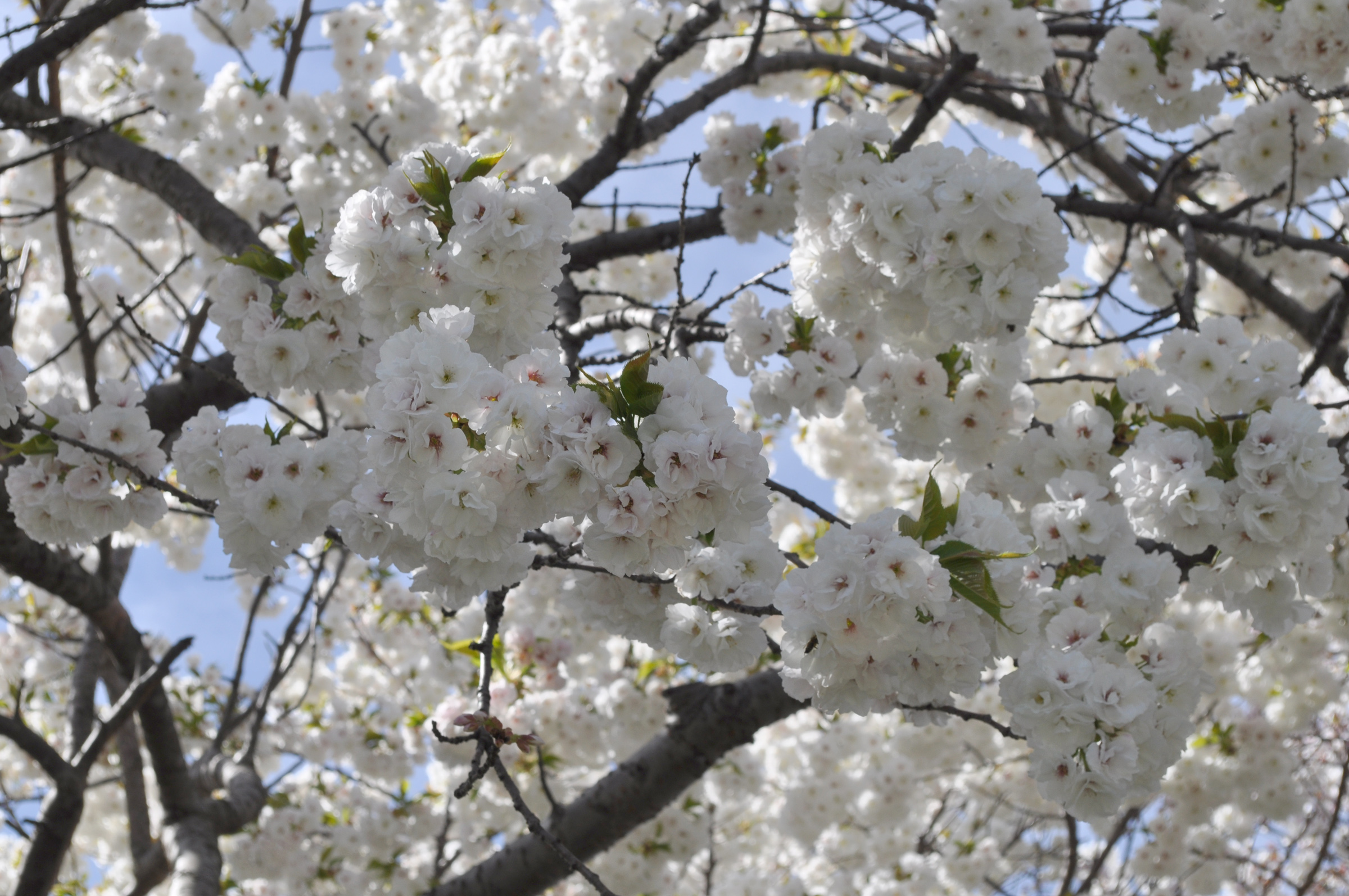RDS (ROSEMARY DEATH SYNDROME) SOLVED?
/10 Comments/in Gardening/by Lee ReichLack of Water Could Be the Cause
Looks like I’ve done it again. Killed rosemary, the plant. Worse than that, I’ve killed two rosemary plants. And even worse still, drawing on my experiences killing numerous rosemary plants — perhaps you also have killed one or more — I’ve been dispensing my “expertise” on how not to kill rosemary.
My reasoning went like this: Although native to the generally dry climate of the Mediterranean region, roots of rosemary plants in the ground there can reach far and wide in their explorations for water. Not so for rosemary plants that need to live in pots here, where winters are too cold for them outdoors.
To make matters worse, rosemary’s stiff, needle-like leaves don’t signal that the plant is crying out from thirst by wilting. Read more
PLOTTING ALONG
/5 Comments/in Gardening, Vegetables/by Lee ReichPossible Sources of Anxiety
Especially in years past, I would get a little tense this time of year, because sometime soon I would have to sit down and map out the year’s vegetable garden. As usual, ideas have been bouncing around inside my head for the past few weeks, but the day must come — before April 1st, my date for planting peas — when procrastination must bow to action.
When that time comes, I gather together on the kitchen table printouts of the empty beds in my two vegetable gardens, a sharpened pencil, and notes and plans of gardens past. After taking a deep breath, my first order of business, planning for crop rotation, begins. The theory: Plant no vegetable in the same spot sooner than every third year. The rationale: A garden pest might survive the winter to bother the same plant the following year . . . unless the plant happens to be growing elsewhere, in which case the pest starves and dies.
Pests usually are equally fond of all plants in a plant family, so I won’t grow tomatoes, peppers, eggplants, or potatoes (nightshade family) at the same location without waiting three years. Read more
HAPPY BIRTHDAY GEORGE
/1 Comment/in Flowers/by Lee ReichWas He a Bad Boy?
Washington’s birthday is a proper time to think about cherry trees. Rather than question whether or not George did chop down the tree, and whether or not he had the honesty to admit to the act, I wonder what kind of a cherry it could have been. (The story, incidentally, is apocryphal, having been fabricated by Mason Locke Weems for his 1802 book, Life of George Washington; With Curious Anecdotes, Equally Honorable to Himself and Exemplary to his Young Countrymen. “Parson” Weems also wrote of Washington throwing a silver dollar across the Delaware River).
That cherry tree could very well have been something akin to the sweet cherries we can buy or grow today.  Sweet cherries (Prunus avium), sometimes called bird cherries or, in their more wild state, mazzard cherries, were amongst the plants ordered from Europe by the Massachusetts colony in 1629. By 1650, there was a cherry orchard in Yonkers, New York, and before the end of that century, there were plantings in Rhode Island, Maryland, and Virginia. Trees became so abundant that in 1749, Peter Kalm wrote that “all travellers are allowed to pluck ripe fruit in any garden which they pass by, provided they do not break any branches; and not even the most covetous farmer hindered them from so doing.” So it is not unlikely that Papa Washington had a few sweet cherry trees planted at his farmstead along the shores of the Rappahannock River.
Sweet cherries (Prunus avium), sometimes called bird cherries or, in their more wild state, mazzard cherries, were amongst the plants ordered from Europe by the Massachusetts colony in 1629. By 1650, there was a cherry orchard in Yonkers, New York, and before the end of that century, there were plantings in Rhode Island, Maryland, and Virginia. Trees became so abundant that in 1749, Peter Kalm wrote that “all travellers are allowed to pluck ripe fruit in any garden which they pass by, provided they do not break any branches; and not even the most covetous farmer hindered them from so doing.” So it is not unlikely that Papa Washington had a few sweet cherry trees planted at his farmstead along the shores of the Rappahannock River.
That abundance of cherry trees and cherries is interesting because here in the Hudson Valley, in Eastern US in general, sweet cherries are not an easy crop. Read more



